
Hiring the right people, keeping top talent, and avoiding costly turnover, it’s tough to stay ahead when you’re always reacting. Most HR teams rely on past data, but that’s no longer enough.
That’s where predictive HR analytics steps in. Rather than guessing or relying solely on past performance, this method gives you insight into what lies ahead. By analysing data from engagement scores, performance reviews, and tenure trends, you can forecast who might leave, who might excel, and where your workforce gaps may appear.
In this article, you’ll learn how predictive analytics resolves those pain points, reducing turnover, improving hiring success, and helping you plan smarter.
Predictive analytics begins with data collection from various HR systems, including Human Resource Information Systems (HRIS), Applicant Tracking Systems (ATS), performance management platforms, and engagement surveys. The quality of predictions hinges on clean, comprehensive data.
HR teams use predictive models such as regression analysis, decision trees, and machine learning algorithms to find patterns and correlations within this data. These models can predict future events like employee resignations, performance dips, or training needs.
While traditional analytics is retrospective, predictive analytics is proactive. It transforms HR from a reactive function into a strategic partner that can foresee challenges and opportunities before they arise.
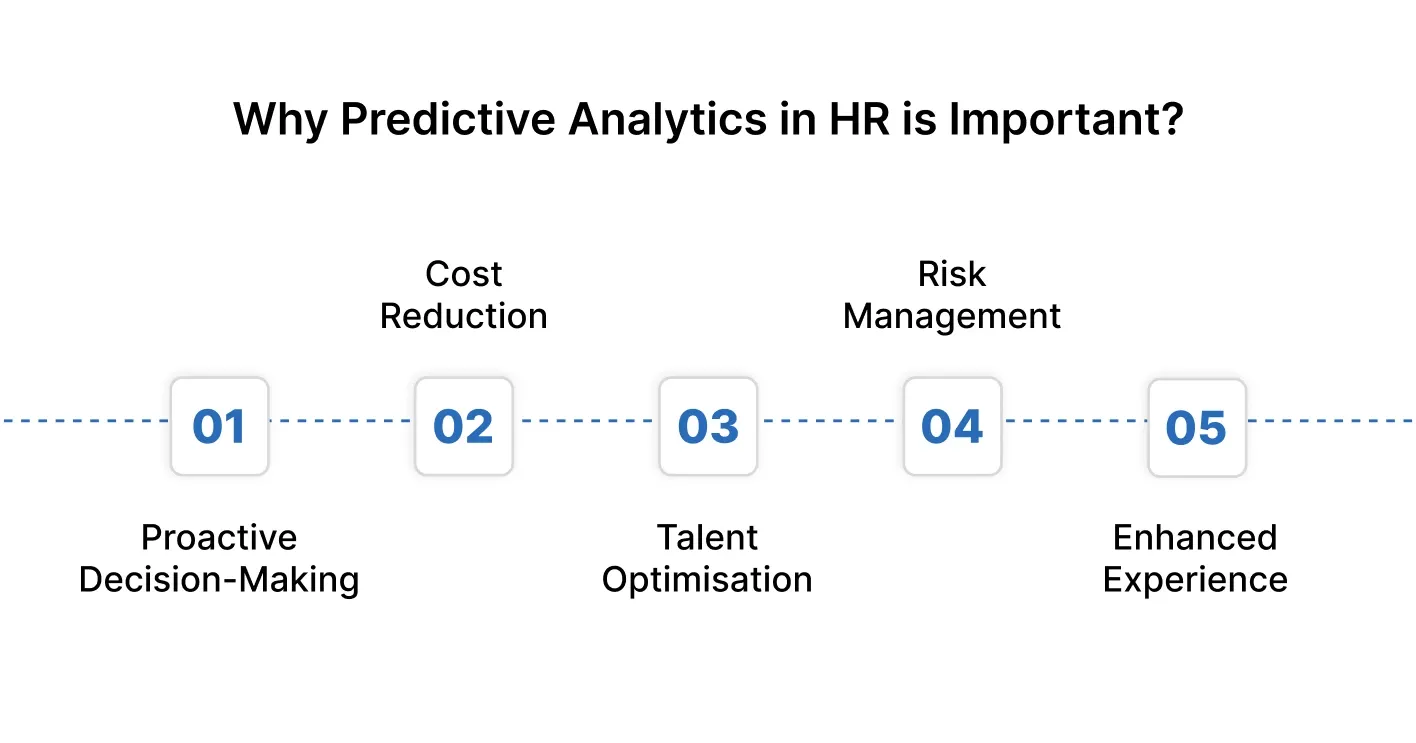
Predictive analytics provides clear, tangible benefits that enable you to manage talent more effectively, reduce costs, and enhance employee satisfaction. Some of these benefits include:
This proactive approach is especially valuable in several key areas of HR where anticipating outcomes can drive better results.
Also Read: Essential Guide to Get Started with People Analytics: Definitions, Processes, and Trends
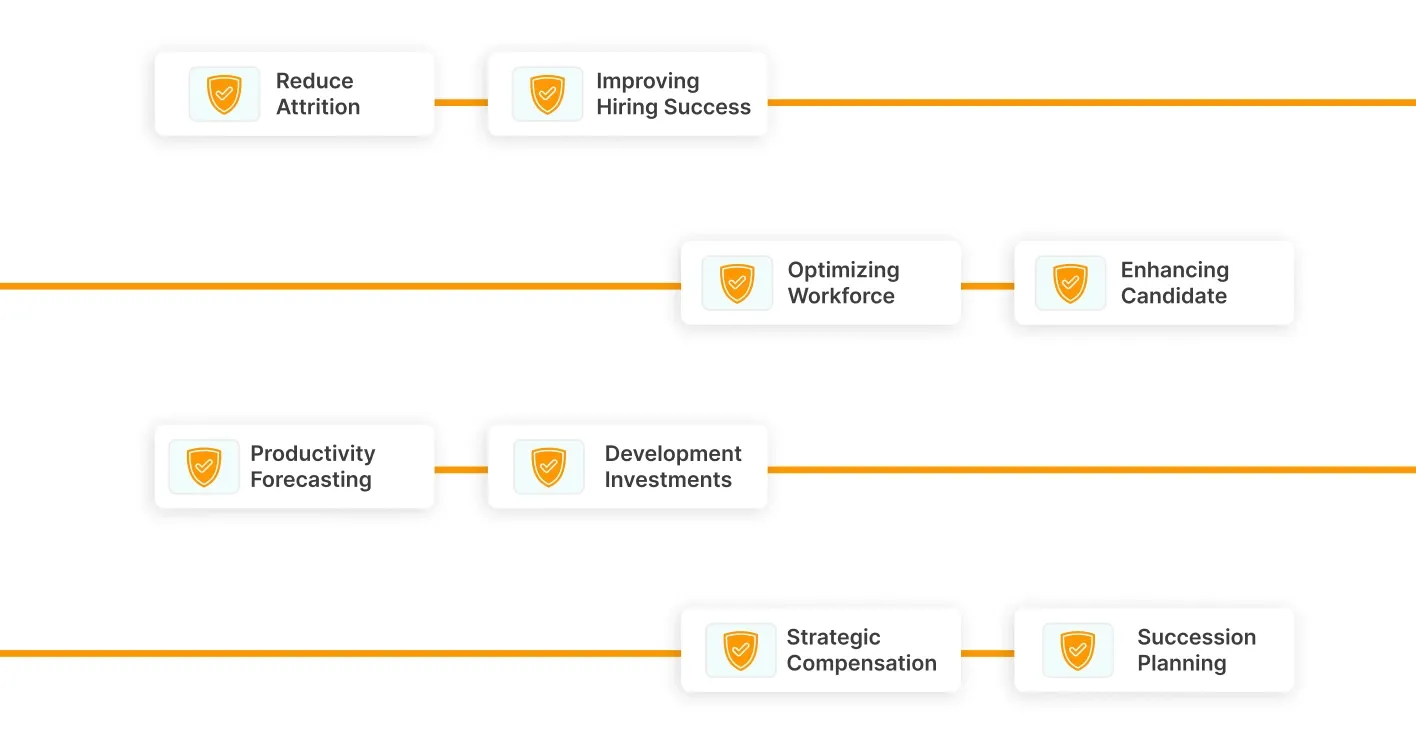
Predictive HR analytics empowers HR teams to shift from reactive problem-solving to proactive, strategic workforce management. By identifying patterns and trends in historical data, predictive models provide deep foresight into talent-related decisions, well before issues arise.
Here are the most valuable and forward-thinking use cases that leading HR teams are applying today:
Problem it solves: Employee turnover drains productivity and budgets. Recent figures indicate replacement costs could range from half to 4 times an employee’s annual salary, depending on role complexity.
How predictive analytics helps: Models analyze data from tenure, performance reviews, salary competitiveness, engagement scores, internal mobility, and even manager effectiveness to flag individuals at high risk of leaving.
Outcome: HR can take pre-emptive action, like offering growth opportunities, manager coaching, or re-evaluating compensation, well before resignation letters are handed in.
Problem it solves: A poor hiring decision can delay projects and lower team morale. Often, success hinges on more than just qualifications.
How predictive analytics helps: By analyzing data from past successful hires, such as interview ratings, job history, time-to-productivity, and long-term retention, models can forecast which candidates are more likely to succeed in specific roles.
Outcome: HR can prioritize candidates who align more closely with performance, culture, and tenure goals, thereby enhancing both hiring efficiency and long-term retention.
Problem it solves: Workforce imbalances, whether shortages or overstaffing, can hinder growth or inflate costs.
How predictive analytics helps: Models combine business forecasts, historical hiring cycles, internal mobility trends, and external labor market data to forecast headcount needs, talent gaps, and geographic demand.
Outcome: HR can plan recruitment or reskilling efforts in advance, ensuring the right people are available at the right time, without disrupting operations.
Problem it solves: Sourcing the right talent is often a hit-or-miss process, draining resources.
How predictive analytics helps: Algorithms assess candidate pools using factors like education, skill match, job history, and applicant-to-hire ratios to predict who is most likely to progress through the funnel and succeed.
Outcome: Recruiters can focus sourcing efforts on the highest-potential candidates and reduce time and cost per hire.
Problem it solves: Engagement is often measured, but rarely connected to business performance.
How predictive analytics helps: By linking engagement metrics with output (sales numbers, project velocity, retention), predictive models forecast how shifts in engagement will affect revenue and productivity.
Outcome: Leaders can invest in engagement drivers that deliver measurable business ROI.
Problem it solves: L&D programs are costly and often generic. Not every course delivers ROI.
How predictive analytics helps: Models assess which learning experiences correlate with improved performance, promotions, or retention for different employee segments.
Outcome: HR can personalize development plans and prioritize high-impact training for the right individuals, thereby maximizing learning ROI.
Curious how performance data ties into appraisals? Watch our exclusive webinar, Deep Dive into Appraisal Season, to explore how predictive insights can transform performance reviews, reduce bias, and elevate talent development outcomes.
Problem it solves: Without data-driven insights, compensation planning often leads to inequity or budget overages.
How predictive analytics helps: Tools analyze market trends, pay gaps, internal benchmarks, and growth forecasts to model future compensation needs, by role, department, or location.
Outcome: HR can make informed pay decisions that are fair, competitive, and aligned with business goals.
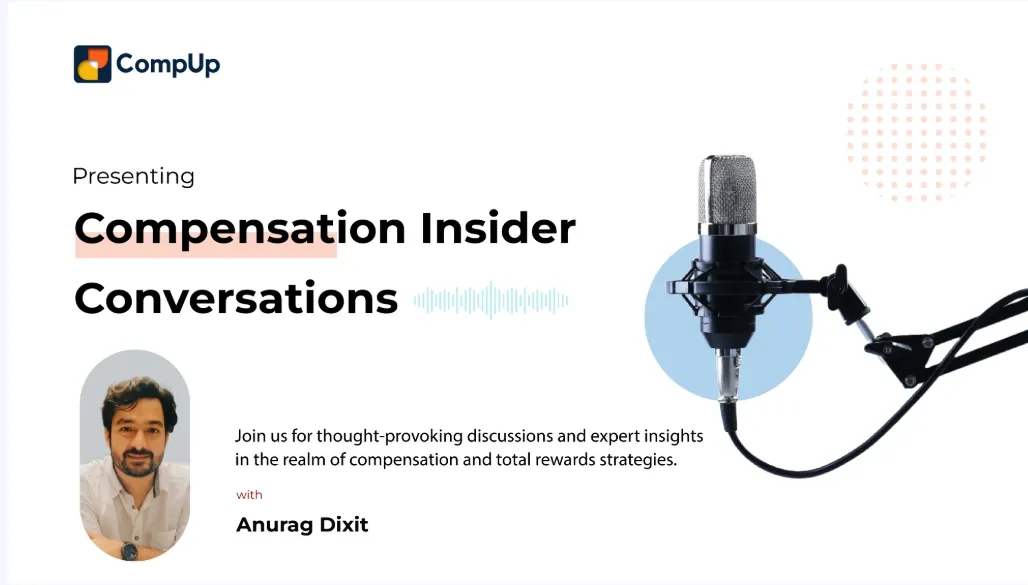
Want to go deeper into this topic? Listen to our podcast episode, Unveiling Compensation Insider. Discover how leading companies are aligning compensation with predictive analytics, fairness, and business impact.
Problem it solves: Relying on external hiring for leadership roles is expensive and risky.
How predictive analytics helps: By analyzing performance history, learning agility, job tenure, and career progression, models can identify high-potential internal candidates for leadership or niche roles.
Outcome: HR can develop succession plans, reduce external hiring dependency, and motivate talent with clear internal pathways.
Predictive analytics offers concrete ways to optimise HR efforts, and these benefits only grow when supported by the right tools.
Also Read: Essential Guide to Get Started with People Analytics: Definitions, Processes, and Trends
To achieve these use cases at scale, HR teams rely on a growing ecosystem of tools designed specifically for predictive analytics.
Predictive HR analytics relies on cutting-edge tools that leverage AI, machine learning, and advanced data modeling to forecast trends and optimize workforce strategies. Here are some top tools used by HR professionals:
Power BI is a powerful data visualization and analytics tool that integrates with various HR systems. It allows HR managers to predict trends like employee turnover, performance evaluation, and engagement, providing actionable insights through intuitive dashboards.
With the added capabilities of Microsoft Fabric, users can build predictive models and analyze employee behavior patterns effectively.
A popular BI and data analytics platform, Tableau helps HR professionals create predictive models and visualize trends. With its integration with Salesforce’s Einstein AI, Tableau supports predictive analytics, such as forecasting turnover rates, optimizing recruitment, and improving employee performance, making it an essential tool for data-driven HR decision-making.
Visier People offers comprehensive workforce analytics, with predictive capabilities to forecast key HR outcomes such as employee attrition, performance, and hiring success. It provides actionable insights that help HR teams plan strategically, with powerful reporting and scenario modeling features.
While these tools can be very effective for predictive analytics, understanding the best practices may help in implementation.
Also Read: Top Salary and Compensation Benchmarking Tools for 2025
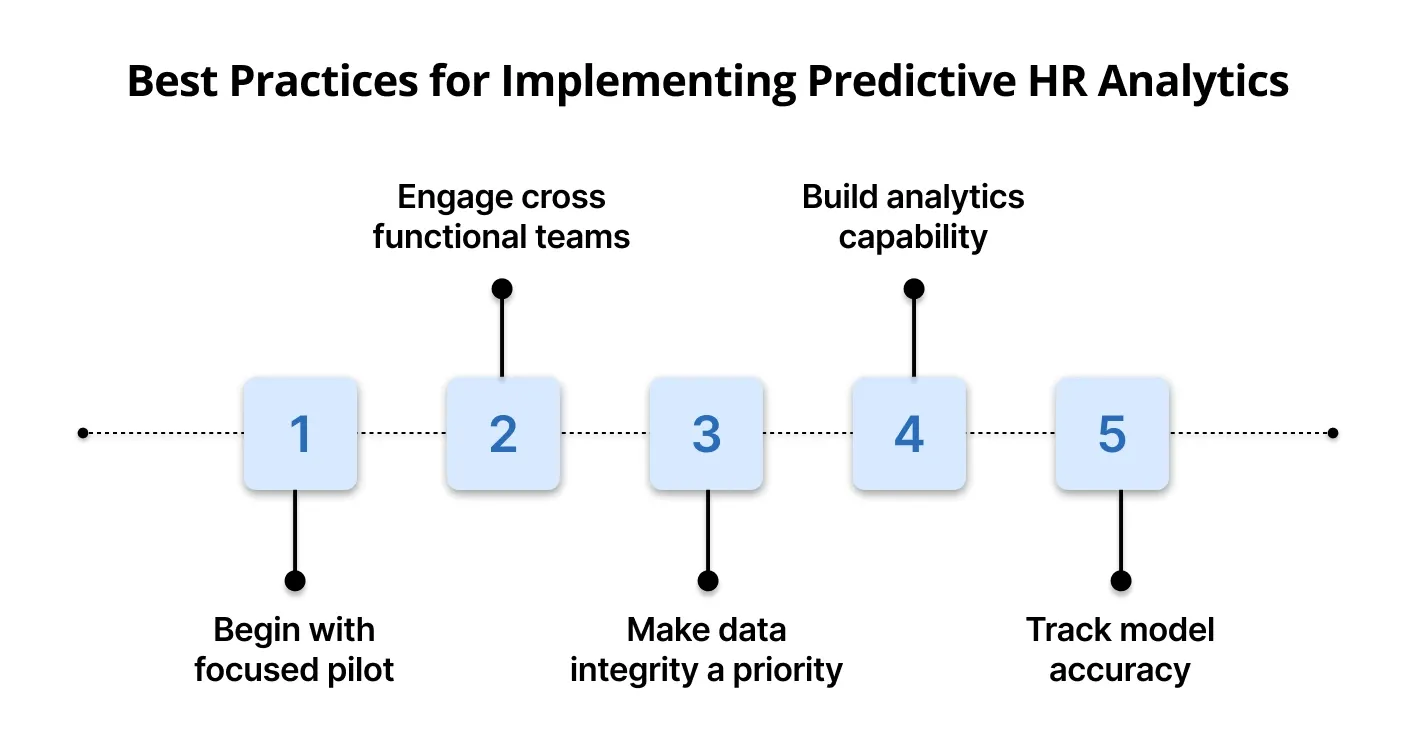
Predictive analytics can transform HR, but only with the right foundation. The best results come from thoughtful setup, strong collaboration, and ongoing refinement. Here’s how to get it right from the start:
These steps create a sustainable foundation for predictive analytics and prepare your organization for future-forward HR strategies.
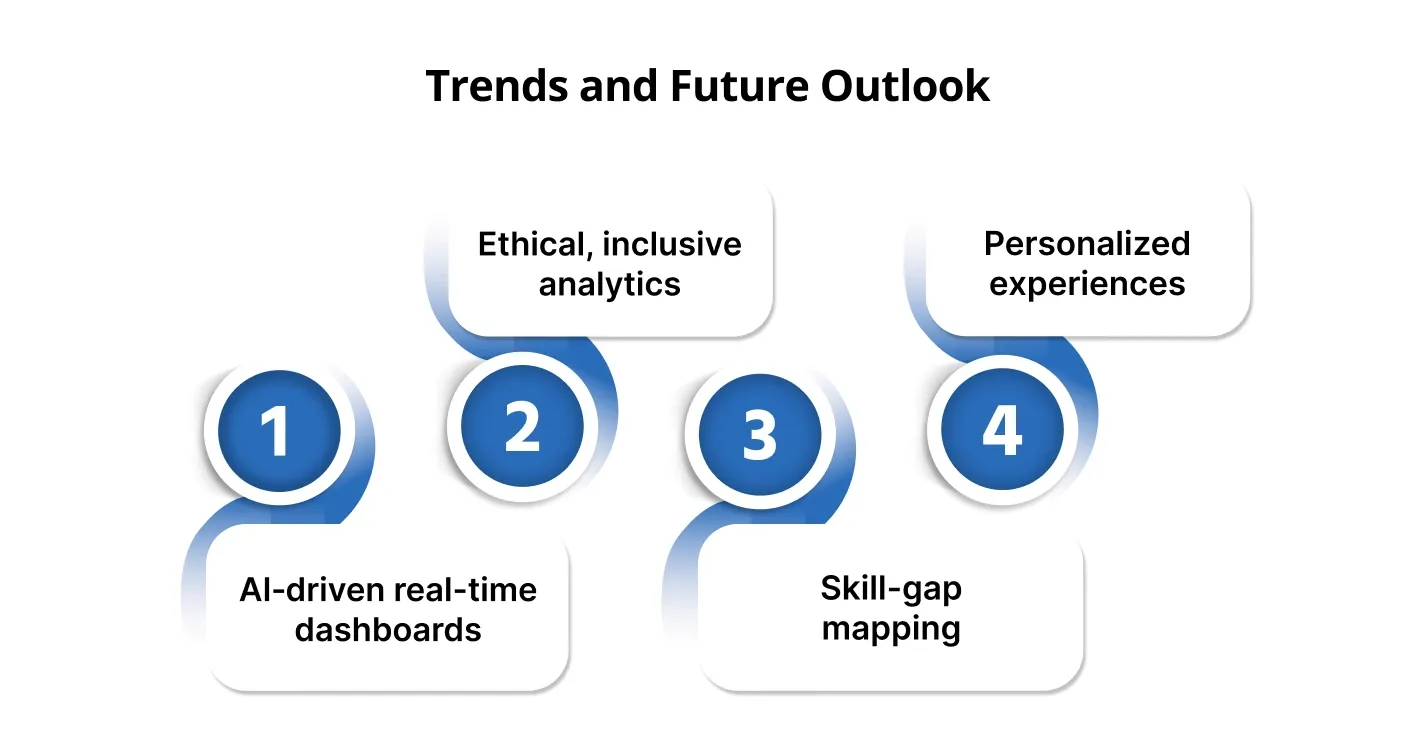
Predictive HR analytics is rapidly shifting from reactive insights to a proactive, people-first strategy. As technology matures, it’s enabling more responsive, fair, and personalized workforce decisions. Here are the key trends shaping what’s next.
Combined, these trends position predictive HR analytics not just as a tool, but as a strategic capability that unlocks agility, fairness, and human-centric workforce planning.
Also Read: 7 Significant HR Trends to Watch Out for in 2025
CompUp’s suite of services, including Compensation Management, Pay Equity, and Hireshot, works hand-in-hand with predictive HR analytics to deliver valuable insights. These tools help HR teams make informed decisions that align with your company’s goals, boost employee engagement, and minimize turnover.
By centralizing compensation data and performance metrics, CompUp ensures your predictive analytics are tailored to fit your unique needs, driving meaningful and measurable results.
As an HR professional, you're often left playing catch-up, reacting to turnover and hiring gaps. But what if you could see these challenges coming and tackle them before they even appear?
CompUp brings this vision to life with predictive HR analytics. By integrating services like Compensation Management and Pay Equity, CompUp turns data into action, helping you optimize talent strategies and reduce turnover.
Ready to stop reacting and start predicting? Let CompUp help you turn your HR challenges into strategic wins. Get in touch with us today to learn more about how our tools can support your HR needs and improve workforce management.
1. What should HR teams do before fully committing to predictive analytics?
Start with a small, clearly defined pilot that addresses a specific challenge, such as turnover in a single department. This allows you to test effectiveness, refine your model, and build internal buy-in before scaling.
2. How do you measure if your predictive model is actually working?
Track how well the predictions align with real-world outcomes. Use accuracy metrics, monitor false positives or negatives, and gather feedback to improve your model over time.
3. What pitfalls should we be aware of when using predictive HR analytics?
Common challenges include poor data quality, lack of analytics skills in HR, resistance to change, and privacy concerns. Address these early by investing in clean data, training, and cross-functional collaboration.
4. How can HR ensure fairness and avoid bias in predictive models?
Ensure fairness by regularly auditing models for bias, being transparent about how predictions are used, and putting privacy safeguards in place. Bias mitigation and inclusive design are critical.
5. What are real-world examples of predictive analytics being applied in HR?
Companies have used predictive models to flag employees at risk of leaving, forecast hiring success, optimize internal mobility, and improve succession planning, often leading to measurable cost savings and higher retention.
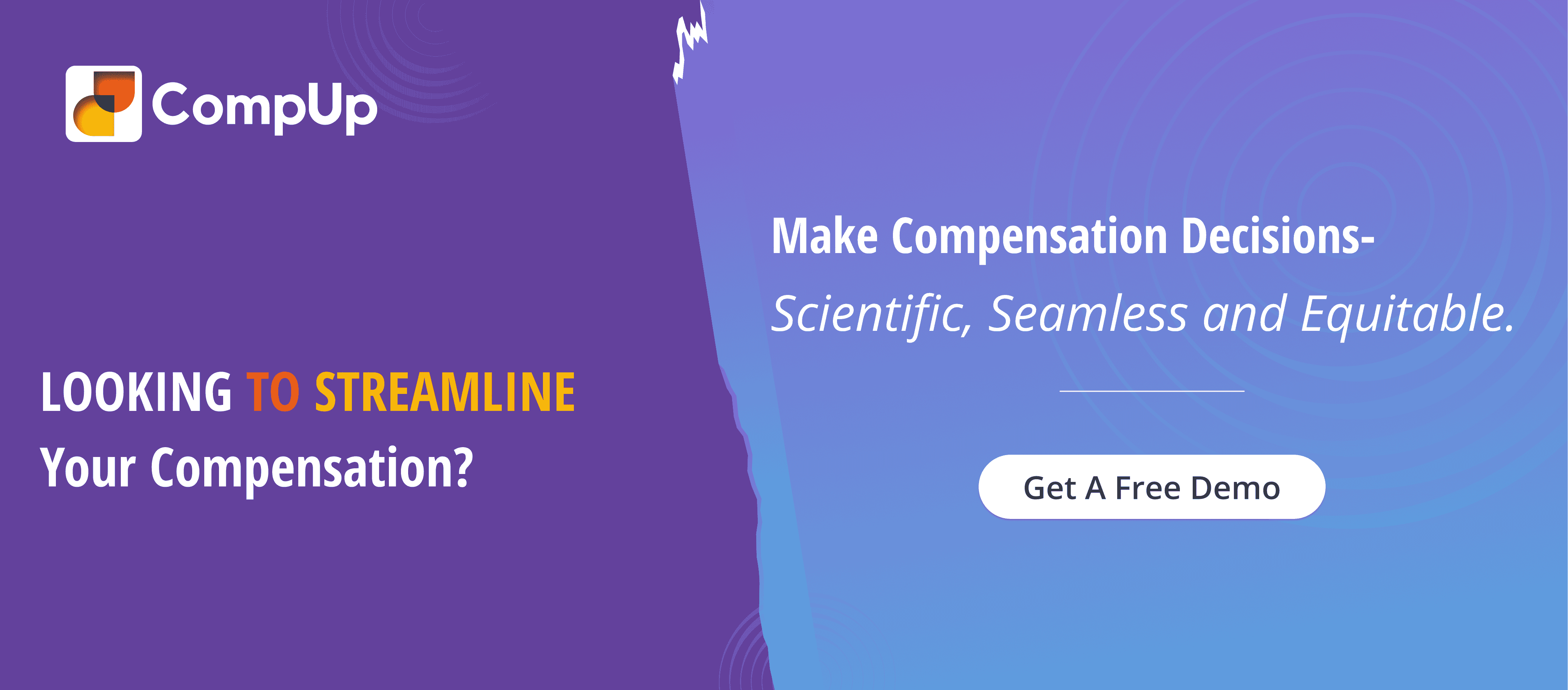
Customer Success Manager
Driven with the aim of becoming a valuable subject matter expert in the world of Total Rewards to be able to deliver exceptional customer experiences.
Revolutionizing Pay Strategies: Don't Miss Our Latest Blogs on Compensation Benchmarking